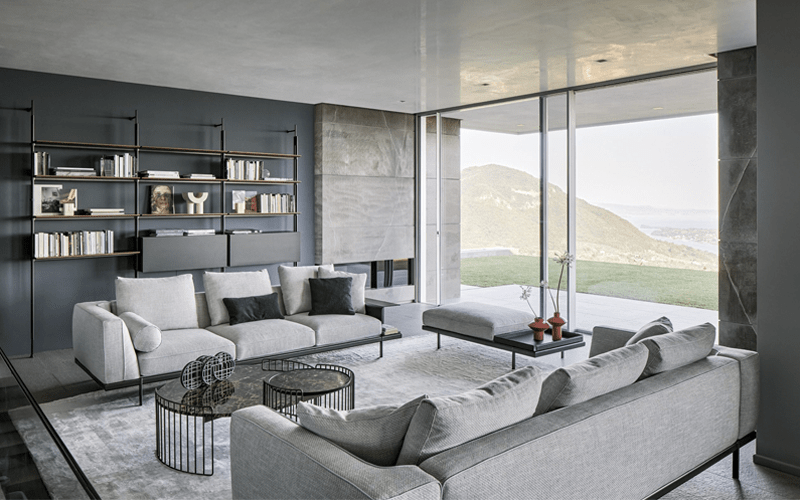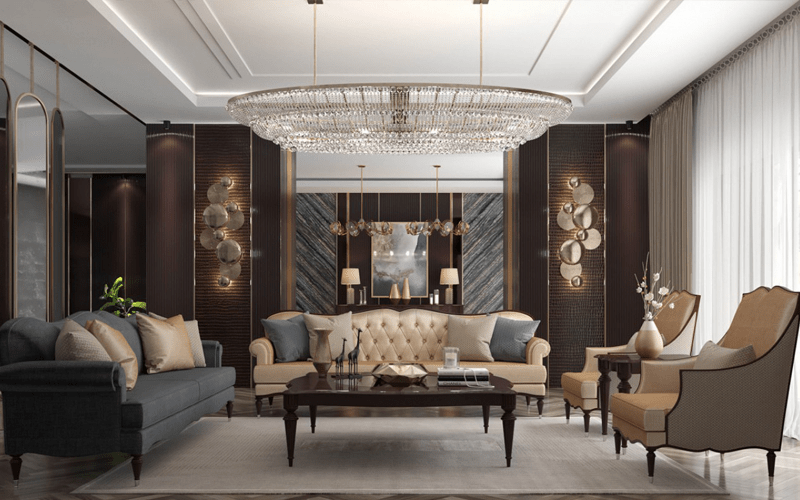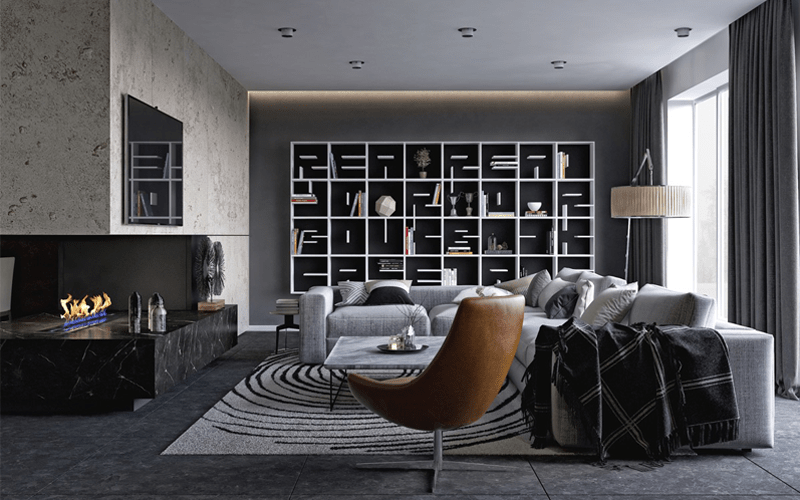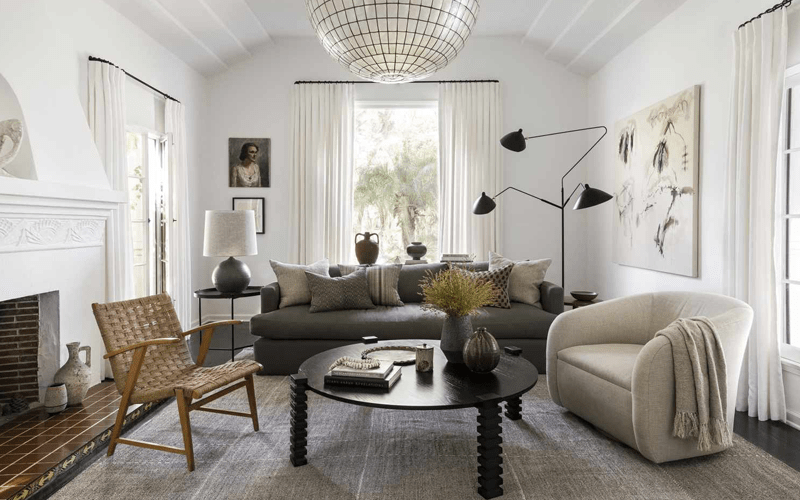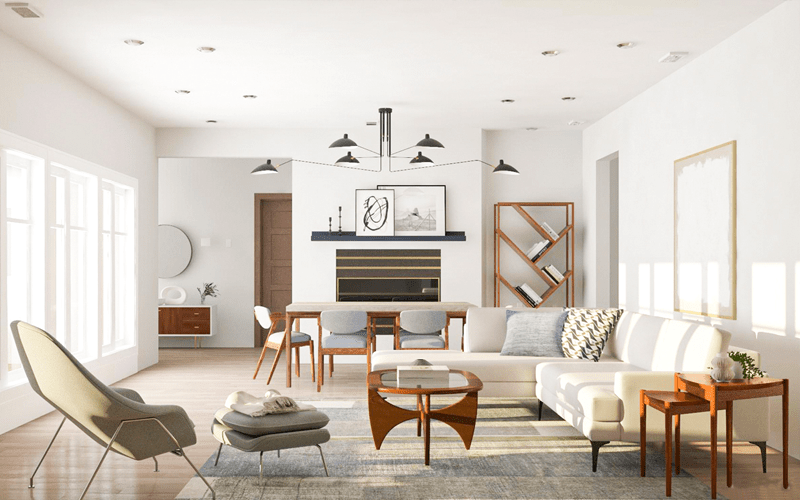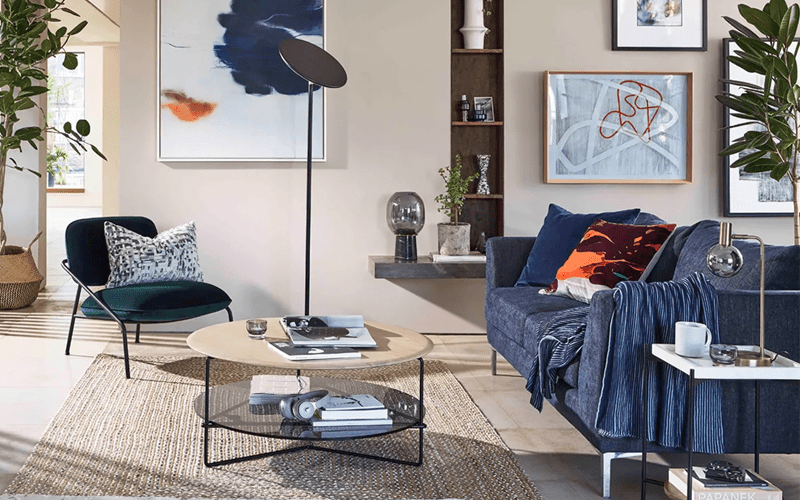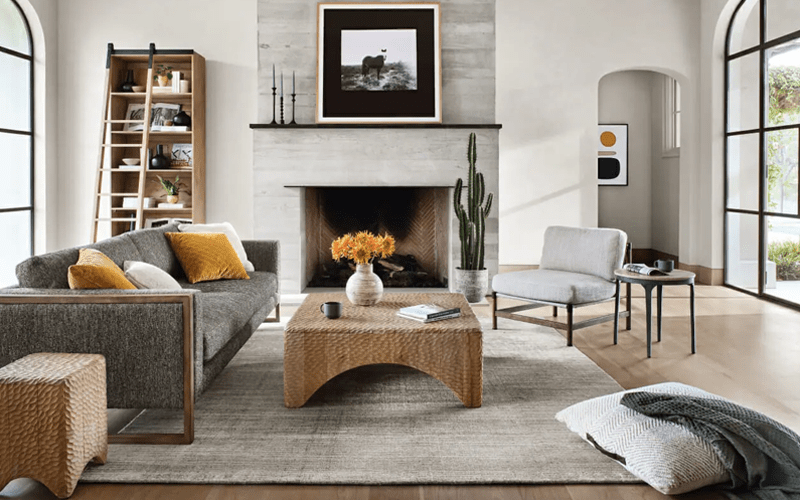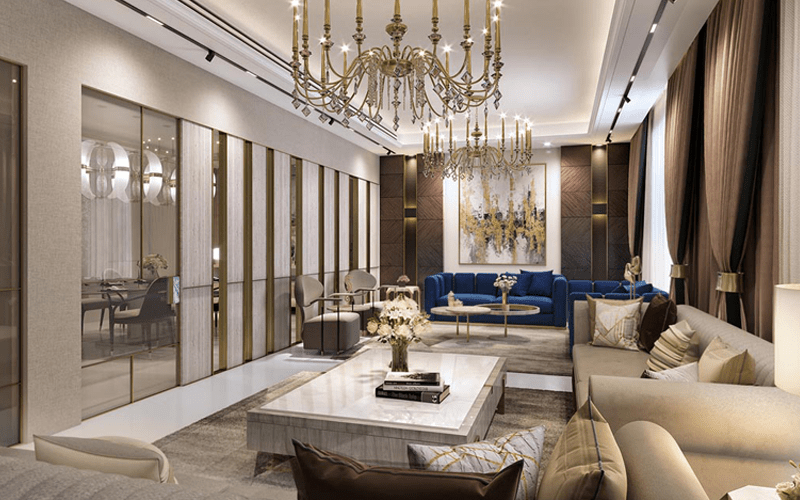II. Mastering the Art of Color Harmony
Color is the soul of any living room. The right color scheme can transform a space, making it feel
larger, cozier, or more vibrant. Understanding color theory is essential in achieving the desired
ambiance in your living room.
A. The Psychology of Colors
Different colors evoke different emotions. Warm tones like reds and oranges create a sense of energy
and warmth, while cool tones like blues and greens bring a calming effect. Neutral colors like
beige, gray, and white provide a versatile backdrop, allowing you to experiment with accent colors.
B. Creating Balance with Color
Balancing colors is crucial. In a room dominated by neutral tones, adding pops of vibrant colors
through accent chairs, throw pillows, or artwork can infuse life into the space. Conversely, in
rooms with bold-colored walls or furniture, neutral accents can act as a visual break, preventing
the room from feeling overwhelming.
Creating a detailed color scheme for your living room furniture involves selecting a primary color,
accent colors, and neutral tones to achieve balance and harmony in the space. Here's a guide to help
you design a cohesive and aesthetically pleasing color palette for your living room furniture:
1. Primary Color:
Neutral Tones:
Beige: Beige is a versatile and warm neutral color that can serve as the primary color for large
furniture pieces like sofas and sectionals. It provides a timeless backdrop and pairs well with a
variety of accent colors.
Gray: Gray is a sophisticated neutral that works well with both warm and cool color schemes. It adds
a touch of elegance and modernity to your living room furniture, especially for items like accent
chairs and coffee tables.
White: White furniture creates an airy and spacious atmosphere. While it may require more
maintenance, it adds a sense of freshness and can be an excellent choice for items like
entertainment units and bookshelves.
2. Accent Colors:
Bold Accent Color:
Teal: Teal is a rich, deep blue-green color that adds a touch of luxury and sophistication. Use teal
for accent chairs, throw pillows, or decorative vases to create focal points and visual interest.
Complementary Accent Colors:
Mustard Yellow: Mustard yellow is a warm and vibrant color that pairs well with neutral tones. Use
it for throw pillows, rugs, or artwork to add a pop of energy and brightness.
Charcoal Gray: Charcoal gray serves as a darker accent color that can be used for smaller furniture
pieces like side tables or ottomans. It contrasts nicely with lighter neutrals and adds depth to the
overall color scheme.
Blush Pink: Blush pink is a soft and elegant color that can bring a touch of femininity and warmth
to your living room. Use it for accent chairs, curtains, or decorative accessories for a subtle and
charming effect.
3. Metallic Accents:
Gold: Gold accents, such as table lamps, picture frames, or cabinet handles, add a touch of glamour
and luxury to your living room. Gold pairs beautifully with neutral tones and can elevate the
overall aesthetic.
4. Wood Finishes:
Warm Wood Tones: Warm wood finishes, such as walnut or oak, add natural warmth and a sense of
coziness to the space. Consider incorporating wood finishes for coffee tables, bookshelves, or TV
consoles to balance out the coolness of neutral colors.
5. Tips for Balancing the Color Scheme:
Proportion: Balance the use of accent colors so that they don't overpower the space. Use bold accent
colors in smaller items like throw pillows, rugs, or artwork, while keeping larger furniture pieces
in neutral tones.
Texture: Introduce texture through fabrics and materials to add depth to the color scheme. For
example,
consider a textured fabric for your sofa or add a woven rug to bring visual interest.
Natural Elements: Incorporating natural elements like indoor plants, wooden decor items, or stone
accents
can enhance the color scheme by adding earthy tones and a sense of balance.
Test Samples: Before committing to a specific color scheme, test paint and fabric samples in the
actual
lighting of your living room. Colors can appear different under various lighting conditions, so it's
essential to see how they look in your space.
By carefully selecting a primary color, complementing it with accent colors, incorporating metallic
accents
and natural elements, and balancing proportions and textures, you can create a detailed and cohesive
color
scheme for your living room furniture that reflects your style and personality.
